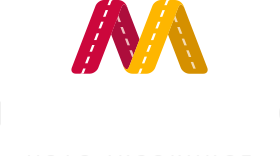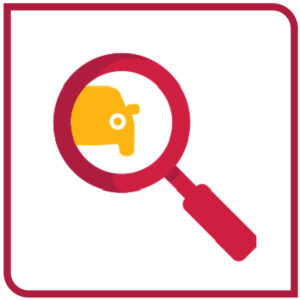Auto insurance fraud is a serious crime that can significantly impact everyone’s insurance premiums. According to the Coalition against Insurance Fraud, “insurance fraud steals at least $308.6B every year from American consumers.” It’s essential to be aware of the different types of fraud and how to protect yourself.
What is Auto Insurance Fraud?
Insurance fraud occurs when someone knowingly deceives an insurance company or policyholder to get money they aren’t entitled to.
There are two primary categories of auto insurance fraud: “hard fraud” and “soft fraud.” Hard fraud involves a policyholder deliberately causing damages with the intent to collect on the other driver’s insurance policy. Soft fraud involves a policyholder exaggerating a claim, intentionally omitting, or lying about the application’s information for a lower premium payment. Soft fraud is the most common type of insurance fraud and is even seen as a crime of opportunity, which is an illegal act committed when a perpetrator sees that there is a chance to commit an act instead of planning the crime ahead of time.
Some common examples of insurance fraud are:
Drive-Down: A driver waves on another driver to proceed and then intentionally hits the passing car.
Hit & Run: The policyholder files a fraudulent hit-and-run claim on a vehicle with pre-existing damages.
Sideswipe: A driver in the inside lane of a dual turn lane drifts into the outer lane, intentionally forcing a collision.
Swoop & Squat: This is a coordinated scheme where two vehicles work in tandem to cause a crash with a third vehicle. One of the fraud vehicles makes an abrupt lane change (“swoop”) in front of the second fraud car, causing it to brake suddenly, or “squat.” As a result, the third vehicle cannot avoid a collision with the “squat” car. The front “swoop” car typically never will be seen again. The “squat” car driver will submit a claim against the third driver’s insurance for their car’s damage and bodily injuries.
Jump In: When individuals who were not occupants in any of the vehicles involved in a crash claim that they were occupants of one of the vehicles and were injured in the incident.
Exaggerated Claims: Those involved in a legitimate accident exaggerate their injuries or damage to a vehicle to collect extra money.
Fake Repairs: A repair shop might pad the cost of repairs, bill for work never done, or claim an undamaged vehicle part needs to be replaced.
Towing Scams: A tow truck may show up minutes after a crash, charging inflated fees for towing and storing a vehicle or taking the car to a dishonest body shop.
Stolen Premiums: A dishonest agent pockets the premium payment instead of sending it to the insurance company.
Phony Coverage: Someone sells a fake insurance or misrepresents a policy’s coverage.
Sliding: An agent or insurer adds extra coverage without the policyholder’s knowledge, increasing premiums.
Attorney Settlement Schemes: An attorney may assist with an insurance claim but might take a portion or all of the insurance payout from the claimant.
How Does Fraud Affect You?
Even if you’re not directly involved in fraud, it hurts your wallet. Here’s how:
Higher Premiums: Insurance companies raise premiums to cover the costs of fraud.
Delays and Denials: Fraudulent claims slow the claims process for everyone as they require extra investigation, making it harder to get legitimate claims paid quickly.
How to Protect Yourself
There are steps you can take to avoid becoming a victim of auto insurance fraud:
Gather Evidence After a Crash: Take photos, gather information for all persons involved, attempt to get witness information, look for nearby surveillance cameras, and look for suspicious activity, such as changing stories about the crash.
Invest in a Dash Cam: These small cameras mounted to the dashboard of your vehicle record your drives, providing crucial evidence in case of fraudulent activity around a crash.
Related: Dash Cams: The Silent Witness
Be Wary of High-Pressure Sales Tactics: A legitimate agent will give you time to consider your options, not pressure you into buying a policy on the spot. If you have concerns, you can check with the Maryland Insurance Administration to see if the agent or broker is licensed by calling (410) 468-2000 or 1-800-492-6116 or visiting https://www.apps.insurance.maryland.gov/CompanyProducerInfo/.
Review Your Policy Carefully: Make sure you understand your coverage and what’s excluded.
Only Use Reputable Repair Shops: Ask your insurer for recommendations or check online reviews.
Don’t Sign Blank Forms: Only sign documents after you’ve read and understood them.
Report Suspicious Activity: If you suspect there is fraudulent activity with an agency, claim, tow company, or body shop, you can report fraud in many ways:
- Contact the Insurance Carrier – Reach out to the insurer who you think is being defrauded.
- Maryland Auto can be reached by phone at 800-492-7120
- Contact the Maryland Insurance Administration’s Insurance Fraud Division
- Call 1-800-846-4069
- Complete this form and fax to 410-347-5350 or email to mia@maryland.gov.
- Call the National Insurance Crime Bureau (NICB)
- Call 1-800-835-6422
- Call the Federal Bureau of Investigation (FBI)
- Call (410) 265-8080
For more information about insurance fraud:
- Coalition Against Insurance Fraud – Fraud Stats
- Coalition Against Insurance Fraud – Scam Alerts
- FBI – Insurance Fraud
- Insurance Information Institute – Background On: Insurance Fraud
- Maryland Insurance Administration – A Consumer Guide to Insurance Fraud
- Maryland Insurance Administration – Insurance FAQs Insurance Fraud
- Maryland Insurance Administration – Insurance Fraud for the Consumer
- National Association of Insurance Commissioners – Insurance Fraud
- National Insurance Crime Bureau – Prevent Fraud & Theft




